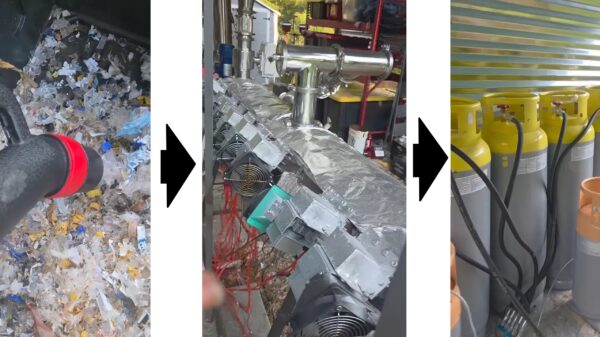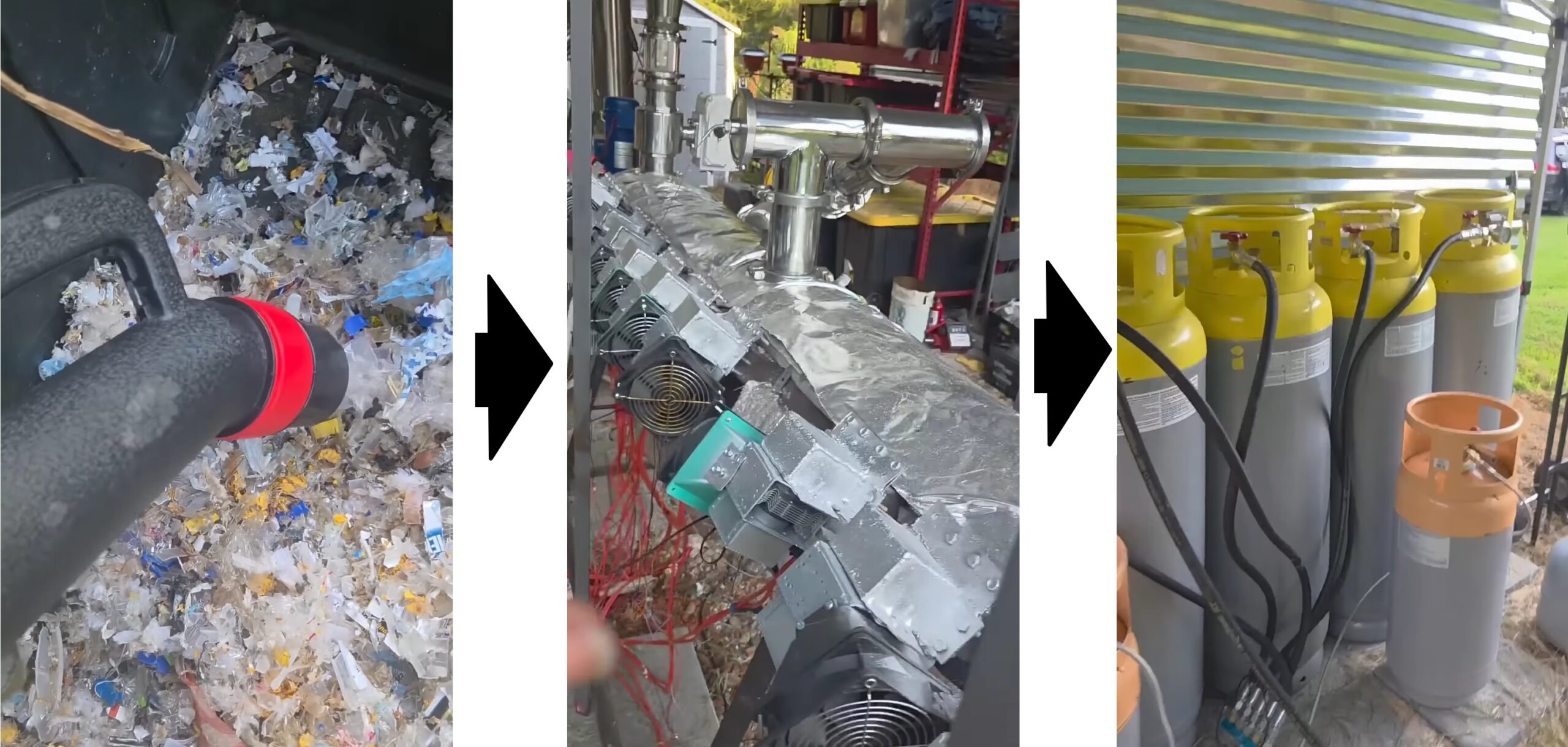A new facility has emerged that harnesses solar energy to convert scrap plastic into usable fuel. Developed by inventor Naturejab, this solar-powered pyrolysis machine is touted as the most complex hand-made pyrolysis reactor in the world. The facility not only addresses the pressing issue of plastic waste but also showcases a sustainable approach to fuel production.
Pyrolysis is a thermal decomposition process that occurs in the absence of oxygen. When applied to organic materials, such as plastic, the process separates covalent bonds, resulting in a breakdown into simpler substances. In this case, scrap plastic is transformed into natural gas and petroleum. The entire operation at Naturejab’s facility is powered entirely by solar energy.
Solar Power and Efficient Design
The facility utilizes a 100 kWh Komodo commercial power tank and is equipped with approximately twenty solar panels, generating between 8-9 kilowatts of energy. To start the process, operators load scrap plastic into the machine via a vacuum pump connected to a flexible tube. This design allows the plastic to be efficiently transferred into the reactor’s main chamber.
Once inside, the plastic enters a vacuum chamber where eight active magnetrons, similar to those found in microwave ovens, heat the material. Since the environment is devoid of air, the plastic does not ignite; instead, it melts and degrades into vapors of petroleum and natural gas. These vapors are then cooled through a dephlegmator, resulting in crude oil and natural gas, which are stored separately for further processing.
Potential Impact on Waste Management
The implications of such technology could be significant in the fight against plastic pollution. By converting waste materials into fuel, this facility presents a dual benefit: reducing the amount of plastic in landfills while producing a valuable energy resource. The innovative approach exemplified by Naturejab’s facility may inspire similar initiatives globally, highlighting the urgent need for sustainable waste management solutions.
For those interested in the field of pyrolysis, additional reading such as “Methane Pyrolysis: Producing Green Hydrogen Without Carbon Emissions” may offer further insights into the potential of this technology.
This pioneering facility stands as a testament to the possibilities of renewable energy and innovative engineering in addressing one of the world’s most pressing environmental challenges.

































































